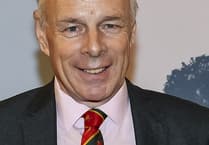HINKLEY Point C could be nearly twice as expensive to build and six years late generating its first electricity, its French owners EDF admitted this week.
Britain’s first new nuclear power station in more than 20 years was originally forecast to cost £18 billion and to be ready to open next year.
However, the timetable slipped to 2027 for its first reactor to power up and construction costs rose to between £25 and £26 billion.
Now, a re-evaluation of the project has revealed in a worst case scenario it might not start producing electricity until 2031 and could cost as much as £35 billion.
EDF said at the earliest, reactor number one was not now expected to become operational until some time in 2029, depending on if it achieved its ‘target productivity for the electromechanical work’.
But it also said ‘given the complexity of the project’ and an ‘unfavourable scenario’ it could be delayed until 2031.
A spokesperson said: “The costs of completing the project are now estimated at between £31 billion and £34 billion in 2015 values.
“The cost of civil engineering and the longer duration of the electromechanical phase and its impact on other work are the two main reasons for this cost revision.
“If the risk of an additional delay in the final scenario does materialise. it would result in an estimated additional cost of around £1 billion in 2015 values.”
EDF pointed to recent Hinkley C construction milestones which had been achieved, including:
The dome for the reactor one building being lifted into place and installed
Completion of detailed design for the next phase of electromechanical (MEH) work
Delivery of 70 per cent of the equipment to be installed on reactor one
Building the steam generators which were now ready for delivery,
Progress with testing of the UK instrumentation and control system
The spokesperson said: “The project continues to capitalise on the experience gained from construction of the four other European pressurised reactor (EPRs) around the world.
“Hinkley Point C will be a major source of decarbonised electricity supply for the UK, providing around seven per cent of national consumption.”
Hinkley C managing director Stuart Crooks said: “It is important to say British taxpayers will not pay a penny, with the increased costs being met entirely by shareholders.”
Mr Crooks said to date there had been a 15-month delay caused by the Covid pandemic, so the project was currently only nine months behind schedule.
He said: “That is not perfect, but for the first nuclear plant to be built in Britain since 1995 it is not bad.
“We are now well past the half-way mark with 70 per cent of our equipment for unit one delivered.
“Many risks are now behind us, like the unique British instrument and control system which has been designed and manufactured, with testing already underway.”
Mr Crooks said EDF had made 7,000 changes to the EPR design to ‘satisfy British regulations’, adding 35 per cent more steel and 25 per cent more concrete.
He said: “Going first to restart the nuclear construction industry in Britain after a 20-year pause has been hard.
“Relearning nuclear skills, creating a new supply chain, and training a workforce has been an immense task which others will benefit from for decades to come.”
Mr Crooks said the lessons learned from putting together the first reactor would improve performance on the station’s second and identical nuclear reactor by 20 to 30 per cent.
He said the experience of building Hinkley C would benefit the next planned nuclear development, Sizewell C, in Suffolk, and the future British nuclear programme.
Both projects would save money for consumers, provide energy security for the country, and help the UK move away from its dependence on imported fossil fuels back-up for renewable sources.
Mr Crooks said: “The energy crisis and the urgent need to fight climate change shows how important Hinkley Point C is.
“We are determined to get on with the job to deliver a high-quality plant that will serve Britain reliably into the next century.”
Hinkley C is Europe’s largest construction site with up to 10,000 people on site and is forecast to generate enough electricity to supply six million homes during its 60-year operating life.
Anti-nuclear campaigners have described both Hinkley C and Sizewell C as an ‘unmitigated disaster’.
Stop Hinkley spokesman Roy Pumfrey said Government pans for a ‘nuclear roadmap’ for Britain were ‘pure fantasy’.
Mr Pumfrey said there was nothing in the Government’s plans which took the country any closer to the important target of zero carbon electricity by 2035.
He said: “We need to rapidly ramp up energy efficiency and home refurbishments, something we could be doing right now that would save people money.
“Global renewable energy capacity grew by the fastest pace recorded in the last 20 years last year, but it is still not fast enough.
“Britain is fast losing its lead in this area, thanks to Government bungling and too much focus on fantasy nuclear projects.”
He said the climate issue meant there was not the time to wait around for the expensive Hinkley C ‘white elephant’ to come online.
“We need to get on with energy efficiency and renewable developments right now,” said Mr Pumfrey.



